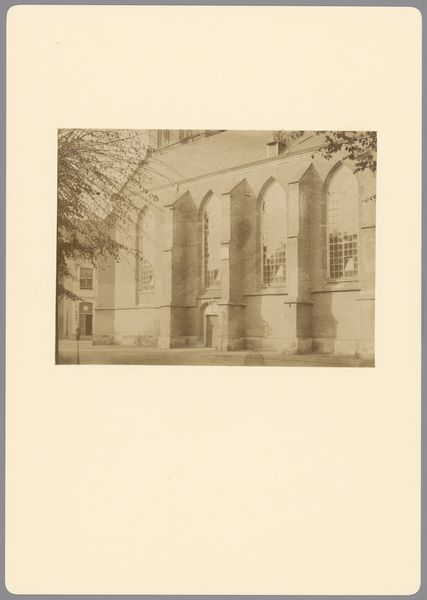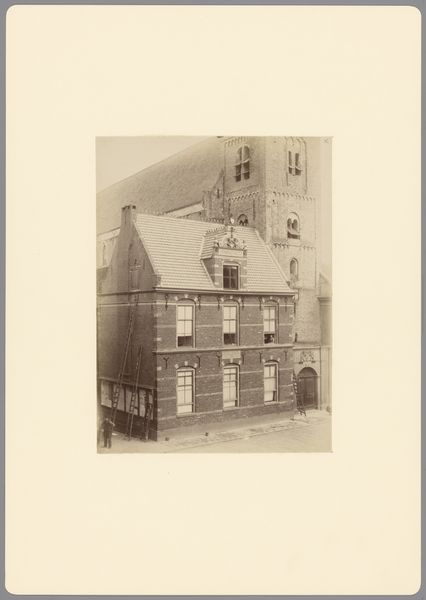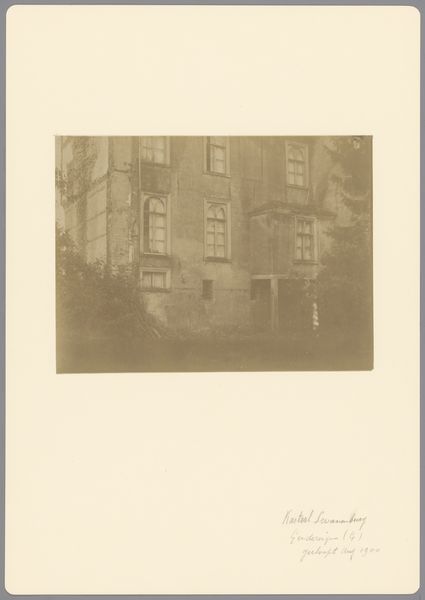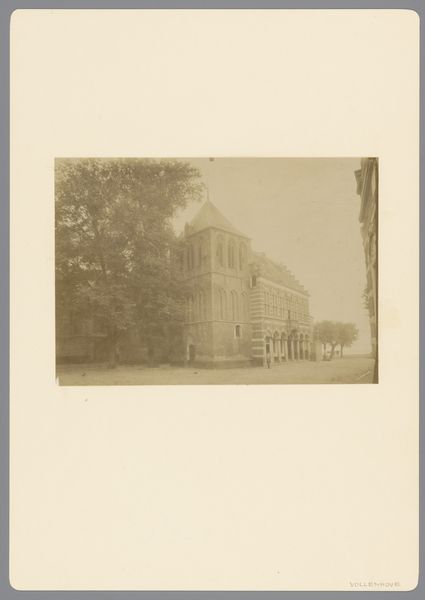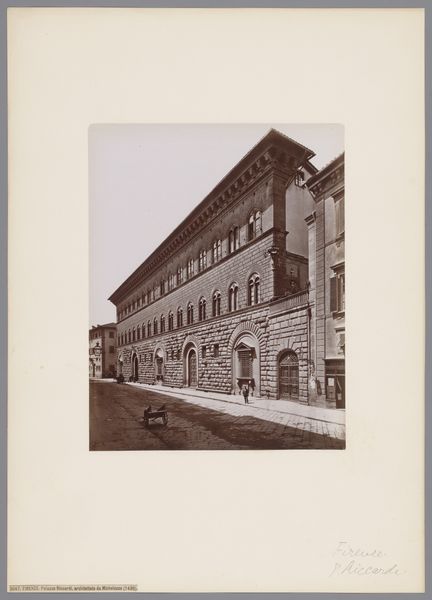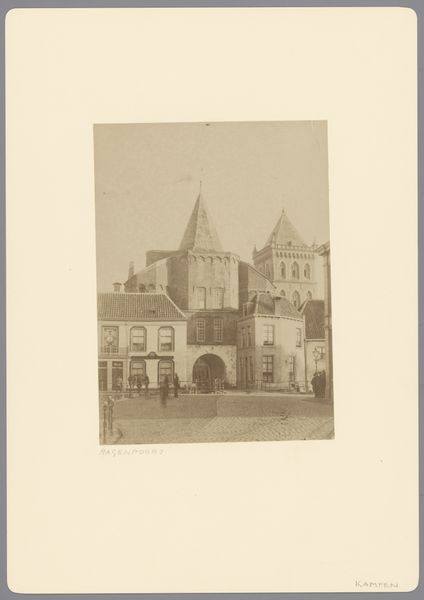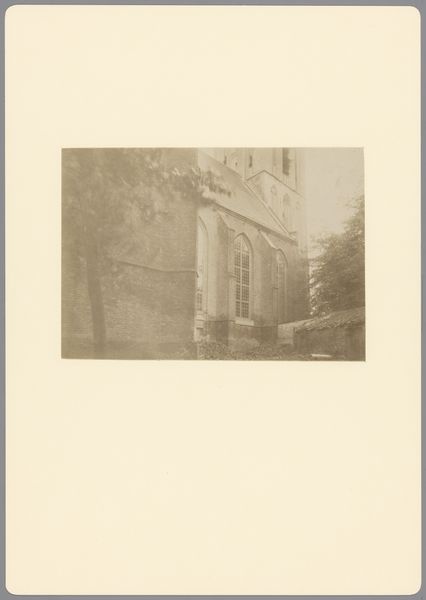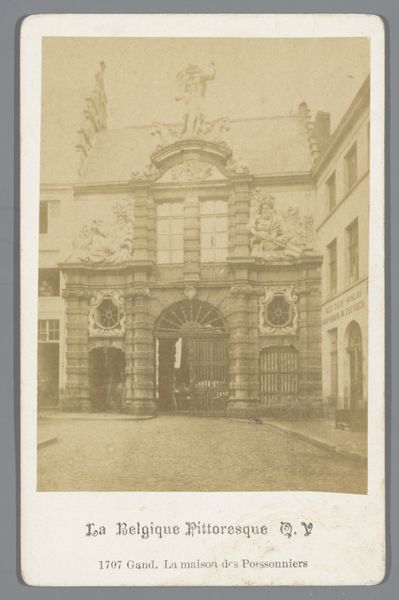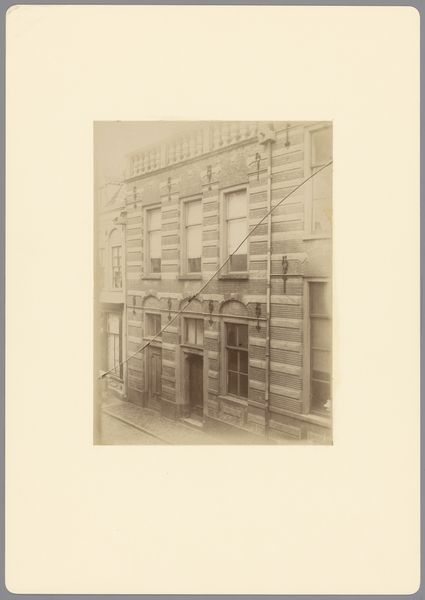
Dimensions: height 171 mm, width 231 mm
Copyright: Rijks Museum: Open Domain
This photograph of the rear facade of the orphanage in Kampen, Netherlands, was produced by an anonymous photographer from Monumentenzorg, likely in the late 19th or early 20th century. At first glance, it’s easy to overlook the materiality of this image, but photography is as dependent on process as any other creative field. The photographer would have meticulously prepared glass plates with a light-sensitive emulsion, then carefully developed the exposed plate to reveal the image. This gelatin silver print, in its warm sepia tones, is a testament to the photographer's skill, and the physical and chemical processes involved. More broadly, the image reflects the social context of the time, with its depiction of a large, austere building dedicated to caring for orphaned children. The architecture itself, with its repetitive brickwork and orderly windows, speaks to the values of efficiency and social control that characterized institutional design during the period. By attending to the materials, processes, and social context of this photograph, we can gain a deeper understanding of its meaning and significance, recognizing photography as a craft deeply embedded in its time.
Comments
No comments
Be the first to comment and join the conversation on the ultimate creative platform.


